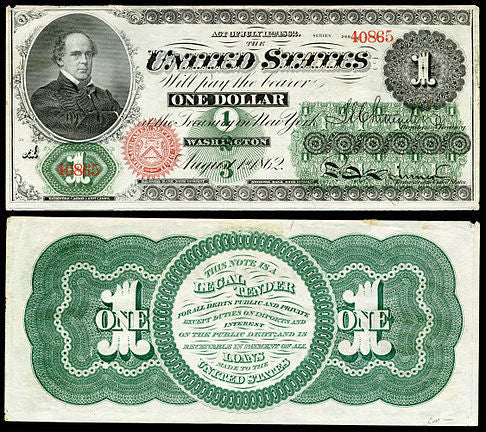Why are U.S. Dollars called Greenbacks?

All U.S. currency, from $1 to $100, has green ink on the back of the bills and black ink on the front. But if you’re like many people, you may at some point have wondered, why?
The answer to this question is an interesting one.
According to the Bureau of Engraving and Printing (BEP), the government agency that is in charge of printing United States currency, the answer goes all the way back to the 1800’s:
“With the growing popularity of U.S. currency and the development of photography in the mid-1800s, it was customary to print the notes in black combined with colored tints as a deterrent to counterfeiting. The early camera saw everything in black. Features that were distinguishable on a bill by color variant lost their individuality when reproduced photographically. However, counterfeiters soon discovered that the colored inks then in use could easily be removed from a bill without disturbing the black ink. The counterfeiter could then eradicate the colored portion, photograph the remainder, and then make a desired number of copies to be overprinted with an imitation of the colored parts.” [source: BEP]
Needless to say, this created a serious problem. If the government was unable to thwart counterfeiters, U.S. currency would quickly be devalued. And if enough fake bills came into circulation, the dollar could have been seen as completely unreliable and very well could have triggered a financial crash that would have come right as the civil war began. So the need to deter counterfeiters was absolutely vital. Luckily the solution was in developing an ink that could not be erased without also adversely affecting the black ink coloring as well. Just such an ink was developed and the patent rights purchased by Tracy R. Edson, a noted banknote engraver. The new bills were produced in 1861 under contract with Edson’s company, American Bank Note, and were printed with a green tint, presumably of the protective ink. As these new bills began to circulate, the public nicknamed them “greenbacks”.
Luckily the solution was in developing an ink that could not be erased without also adversely affecting the black ink coloring as well. Just such an ink was developed and the patent rights purchased by Tracy R. Edson, a noted banknote engraver. The new bills were produced in 1861 under contract with Edson’s company, American Bank Note, and were printed with a green tint, presumably of the protective ink. As these new bills began to circulate, the public nicknamed them “greenbacks”.
The federal government continued their arrangement with the American Bank Note Company up until 1877, when the Bureau of Engraving and Printing was founded.
While the term “greenbacks” may not be as prevalent as it once was, if by chance someone mentions it in conversation, you’ll now at least be able to drop some knowledge on them.
